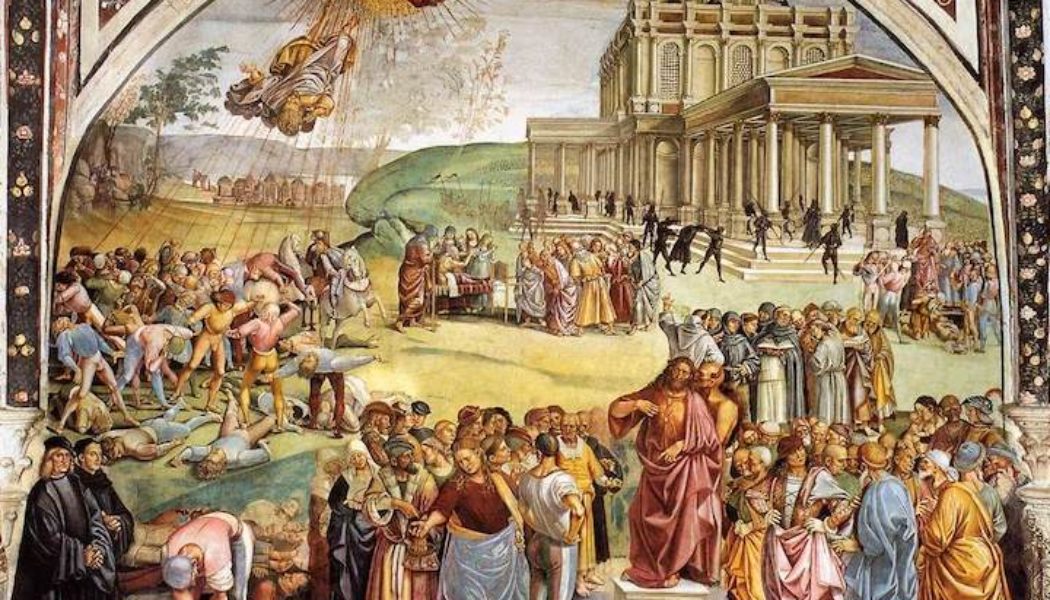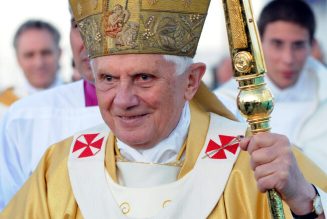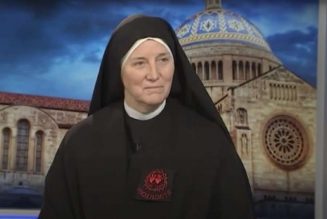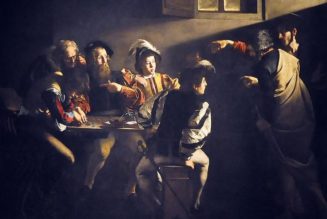Robert Hugh Benson wrote Lord of the World in 1907, just four years after the Wright brothers invented the airplane and seven years before the bloodbath of the Great War. I first read it more than 60 years ago. I’ve reread it every decade since. Pope Francis has read and publicly mentioned it several times, and the novel has always had an avid, if cultish, following. Set in the near future, it’s a story of the rise of the Antichrist, the climactic battle between good and evil, and the end of the world.
The son of an Anglican Archbishop of Canterbury, Benson was a convert to the Catholic faith and a priest. He wrote at a tipping point in European life, a time of rapid scientific and industrial change, social unrest, and political extremism. Reading the novel today is a curious experience. In some ways, the world and the Church are very different from the future Benson imagined. But the book has extraordinary staying power because it captured – and still captures – certain human instincts and the spirit of the times.
In Benson’s story, the Antichrist is a real person, the character Julian Felsenburgh. The name “Julian” is not an accident; it harks back to the apostate emperor Julian, a nephew of Constantine, who tried to restore Roman paganism in the fourth century. Felsenburgh rises meteorically onto the world scene from an ambiguous past.
He averts a global war, brings a new era of amity among nations, and radiates intense goodwill rooted in the religion of humanism. Mankind has real peace at last. . .although Christianity, regrettably, must be suppressed because of its anti-human obscurantism.
Benson’s belief in a personal Antichrist had its roots in Scripture, specifically in the New Testament’s Man of Lawlessness at the end of time, “the son of perdition, who. . .takes his seat in the temple of God, proclaiming himself to be God.” (2 Thess 2: 3-4) Nor was Benson alone in his thinking. The Russian philosopher and mystic Vladimir Solovyov wrote his “A Short Story of the Anti-Christ” (collected here) at the close of the 19th century.
And the great German theologian Romano Guardini spoke of the Antichrist in his magnum opus, The Lord:
One day the Antichrist will come: a human being who introduces an order of things in which rebellion against God will attain its ultimate power. He will be filled with enlightenment and strength. The ultimate aim of all aims will be to prove that existence without Christ is possible – no, that Christ is the enemy of existence, which can be fully realized only when all Christian values have been destroyed. His arguments will be so impressive, supported by means of such tremendous power. . .that to reject them will result in almost insurmountable scandal, and everyone whose eyes are not opened by grace will be lost.
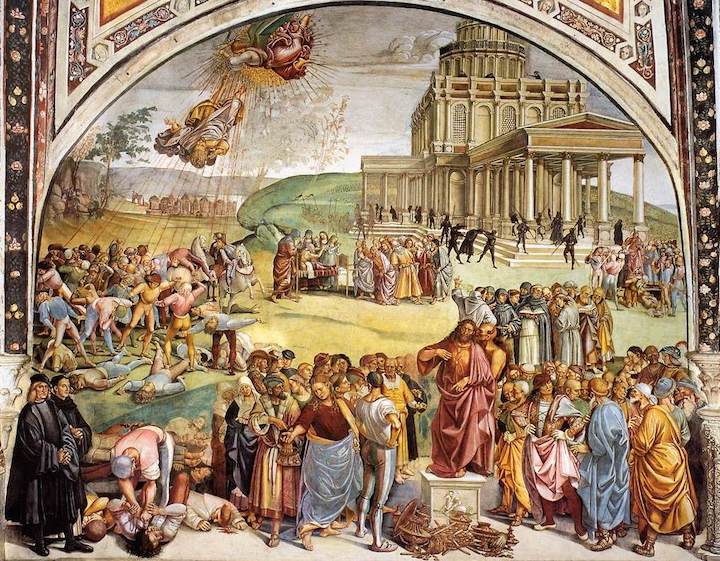
Over the decades, this brand of Antichrist has been especially good news for Hollywood. The 1976 film The Omen, starring Gregory Peck and Lee Remick, spawned three sequels and a remake; various novelizations; three documentaries; two television series; and a planned prequel. The 1968 film Rosemary’s Baby, starring Mia Farrow and Ruth Gordon, is an American classic. It won multiple awards and still boasts a Metacritic rating of 96 out of 100. The Devil, it turns out, has a robust (and profitable) fanbase.
At this point though, readers might sensibly ask why we’d be talking about things demonic just a week or so after the close of the Christmas season with its spirit of celebration and joy. There are two reasons. Both are quite simple.
Here’s the first reason. That cute Baby Jesus figurine in our nativity sets grows up, in the real world, to give his life for us on a tree; to “save us all from Satan’s power” in the memorable words of the Christmas carol. Catholic crosses hold a wounded corpus not because we have a pathological interest in suffering, but to remind us of God’s love for us, and its cost. Such are the real Christmas “tidings of comfort and joy.”
And the Devil is not some sort of mythological boogeyman or impersonal principle of evil, but rather – in Guardini’s words – “a rebellious, fallen creature who frantically attempts to set up a kingdom of appearances and disorder.” Jesus Christ is our teacher, our healer, our brother and friend; but also our savior “in an inevitable struggle with satanic powers. . .which oppose the divine will” and despise humanity. Moreover, this contest with Satan “belongs ineradicably to the picture of Jesus and to his consciousness of his mission. Without this consciousness, indeed, there is no Jesus.”
Having said that, here’s the second reason. These weeks between Baptism of the Lord and Ash Wednesday belong to Ordinary Time on the Church calendar. They’re a kind of Great Plains on the Christian wagon train to our real home. They’re where everyday life happens; where the choices are made and the directions are set for our final destination. In other words, they matter. The Antichrist of Benson, Solovyov, and Guardini may one day show up on the human horizon; the Devil has a taste for grand melodrama. It appeals to his pride. But such things are not for us to know, and speculating on them is an indulgence and a waste.
Instead, we might all of us, and each of us these days, profitably read the First Letter of John, especially 4:1-6 and 2:1-6. It turns out that “antichrist” comes in all shapes and sizes. As John says, it’s the spirit of all things not of God. Which means that my kind of antichrist – and yours – is the sin we find easiest to absolve or ignore in ourselves; the sins hardest to resist and most congenial to our appetites. Their name, if we’re honest, is Legion.
And admitting that is the first step toward making Ordinary Time, conversion time.
*Image: Sermon and Deeds of the Antichrist by Luca Signorelli, 1499-1502 [Chapel of San Brizio in the Duomo of Orvieto, Italy]. Just off-center right, Satan whispers in the Antichrist’s ear. Signorelli’s deceptive Man of Lawlessness is meant to resemble Jesus, and the Devil is a stylized representation of the monk Savanarola. In the lower left corner of the fresco are two standing figures: on the left is Signorelli himself; the other is Fra Angelico, who had begun the Orvieto frescos.
You may also enjoy:
Elizabeth A. Mitchell’s With Twelfth Hour Love
Brad Miner’s Brother John
